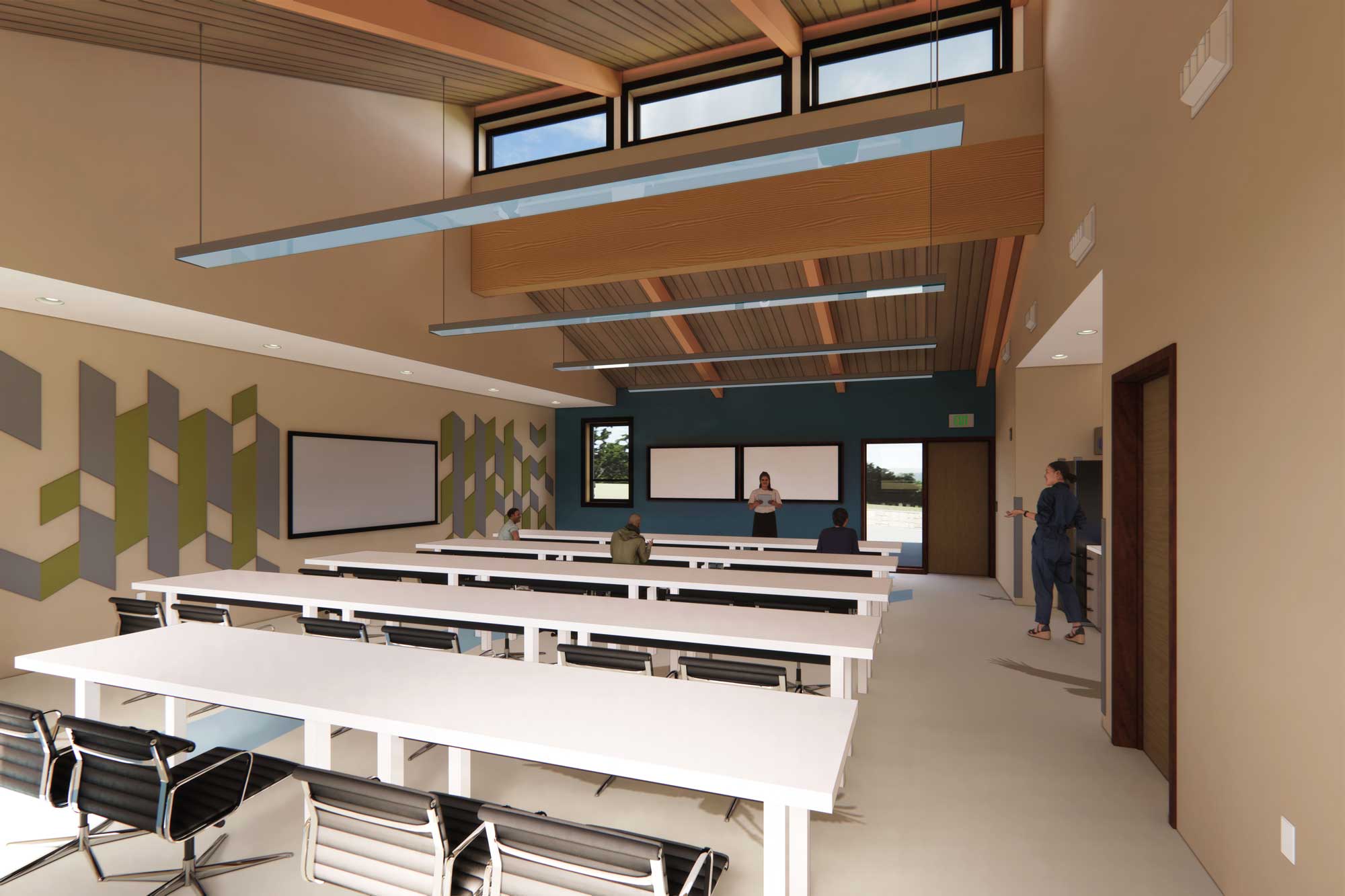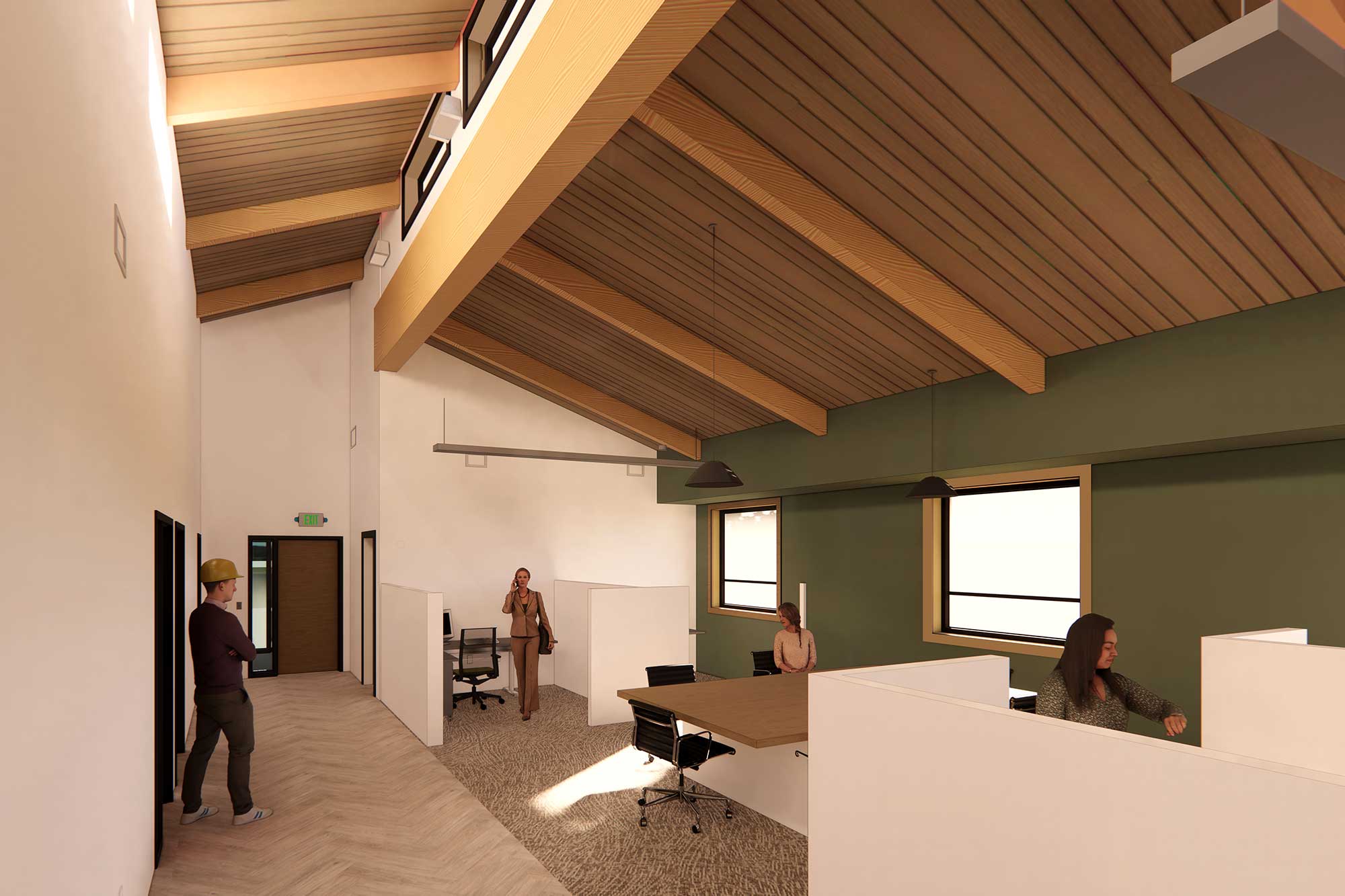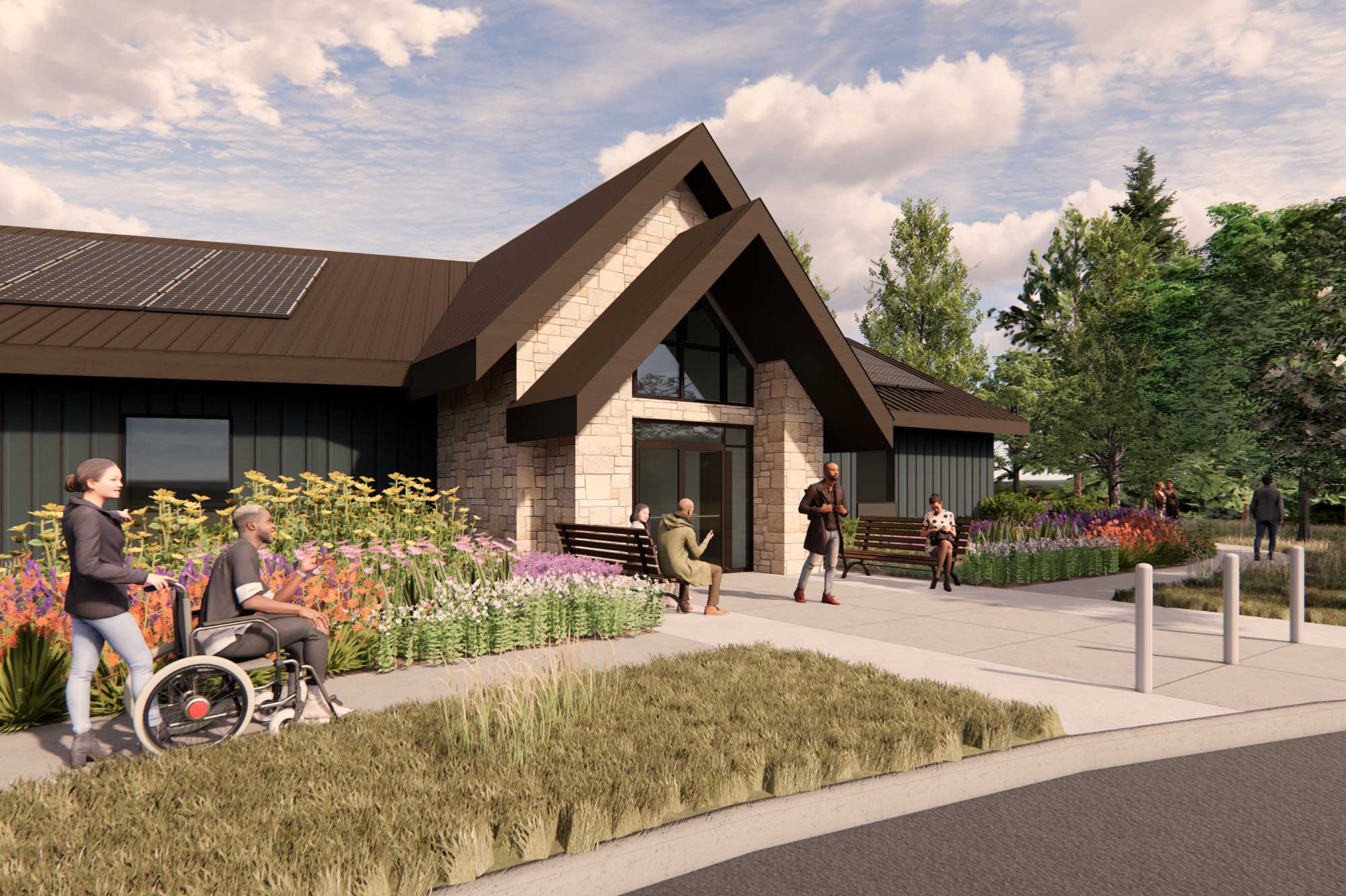On the Boards: Upper Mississippi River National Wildlife and Fish Refuge, McGregor District Headquarters
Continuing its long-time relationship with the U.S. Fish and Wildlife Service (USFWS), Cushing Terrell recently completed the design of a new headquarters and visitor center for the McGregor District of the Upper Mississippi River National Wildlife and Fish Refuge. A haven for migratory birds, fish, and wildlife, the refuge stretches 261 river miles from Wabasha, Minnesota, to Rock Island, Illinois, and protects more than 240,000 acres of Mississippi River floodplain.
The Cushing Terrell team provided site master planning and design for the new visitor center and administration building as well as a separate maintenance building, for a total of 11,000 sq. ft. The visitor center will comprise a reception area, an exhibit hall, an office wing, and a multi-purpose wing — also known as the “environmental education” area — to facilitate community activities and visitor education.
A key piece of the project was assessing and responding to the site and determining the best placement and orientation for the new buildings. An initial concern was the presence of an earthen mound on the site that could have been a Native American burial site. An archaeological survey was conducted and determined that it was not a burial site, thus the feature was incorporated into the design. With the mound being a high point overlooking the river, the building was oriented so that visitors would come in through the entry and have visibility through the building to an observation area highlighting views of the river.
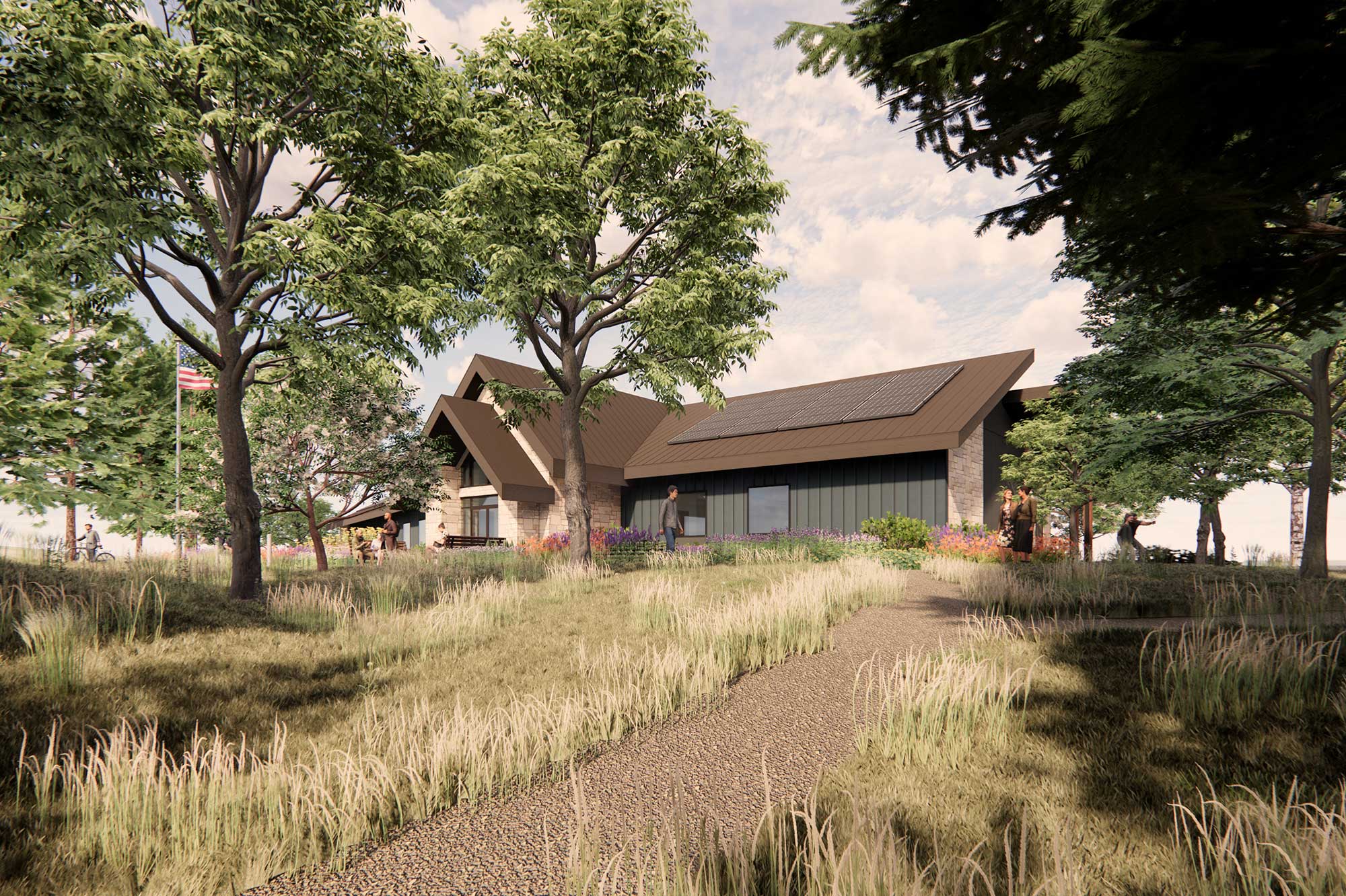
The site also dictated the shape and size of the building as it would need to be tucked between the river bluff and a narrow stretch of land. From the entry and exhibit hall, the building will branch off into two wings — one for administrative offices and one for the environmental education area. A vaulted ceiling and clerestory windows will bring an abundance of natural light into the building. Maintaining site lines and incorporating subtle visual cues for wayfinding were important to keep the space clutter free with a focus on the views. Color was used for accent walls designed to draw visitors to focal points, including the information/reception desk and the observation area. The rest of the space was kept neutral as a backdrop for the exhibits.
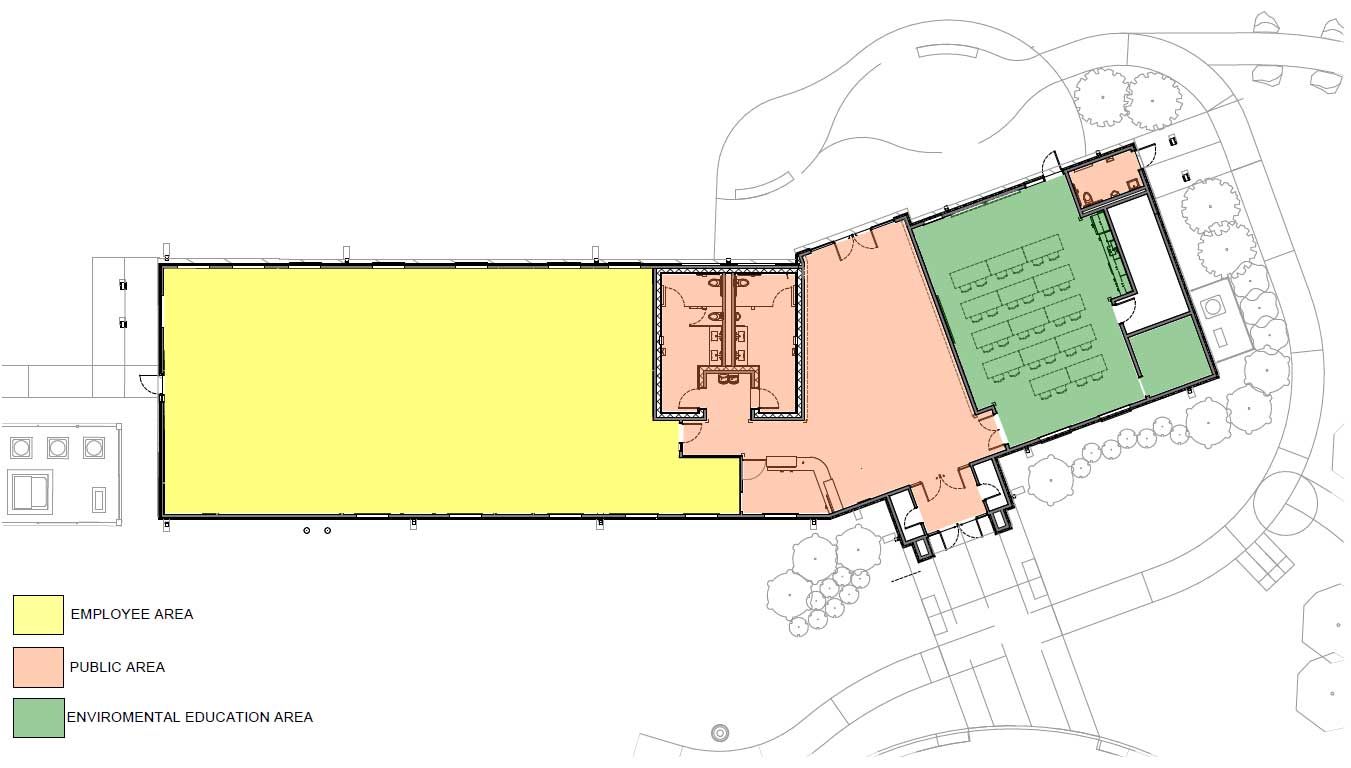
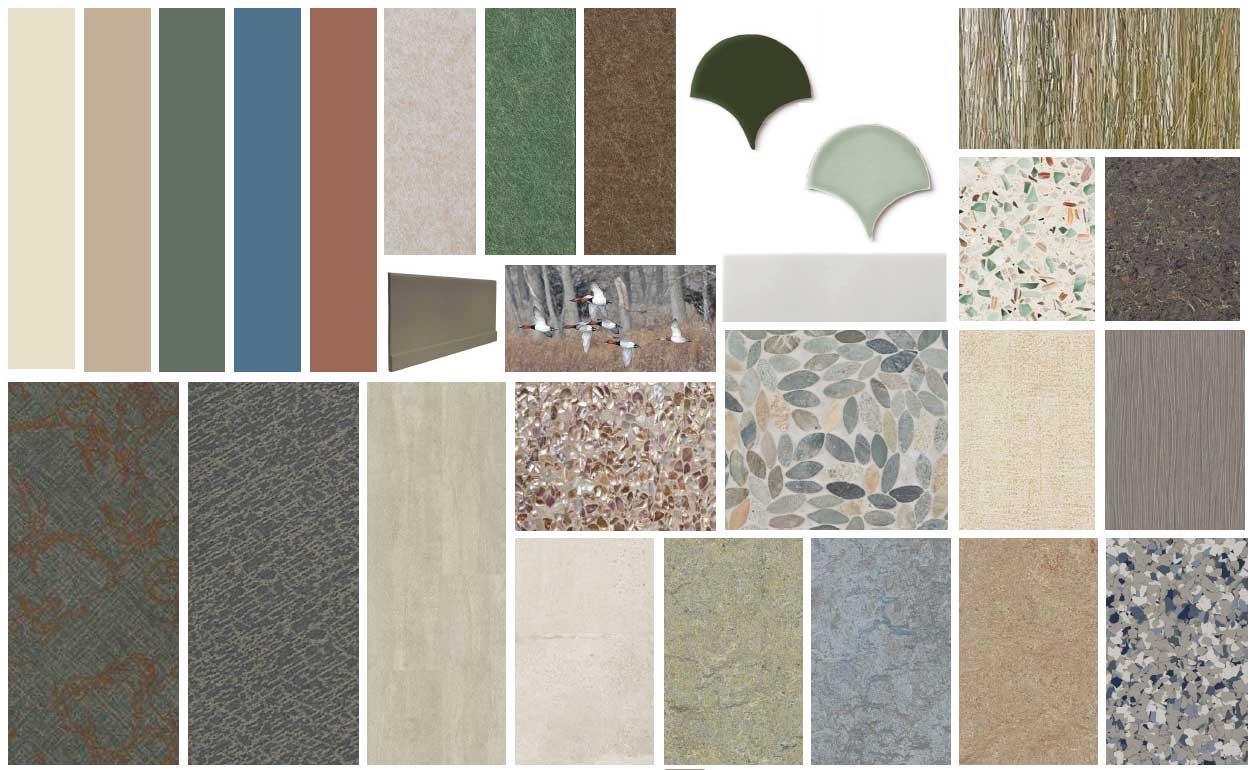
While the architecture was dependent upon the site, so too was the interior design with materials chosen not only for their durability and sustainability, but also for their reflection of the local environment. As you come into the environmental education area, you’ll find a custom-designed marmoleum floor pattern depicting five native bird species, in flight and designed to scale, as well as the winding river itself. Materials were chosen that mimic the look of grass, river rock, and fish scales, and elements such as millwork and lighting were custom designed by local artisans.
Sustainable design was a priority for the project with a focus on energy efficiency and local products and materials. A 30-plus kilowatt PV array will provide solar energy for the building and is designed to be front and center on the roof — visible from the parking area and as you come up to the entrance. Highly efficient mechanical systems and LED lighting, paired with renewable energy ensure the project meets the high energy efficiency goals that are key to the USFWS mission to preserve, protect, and enhance habitats.
As the entire site is an interpretive opportunity, landscape architecture is a key element of the scope of work with sensitive site design that minimizes the impact on the natural environment and facilitates a welcoming visitor experience. Elements such as walking paths, trails, and lookout areas are included in the design as well as wayfinding infused with educational features that convey the client’s mission and highlight critical conservation measures. All these elements work in harmony to create a strong physical and visual connection to the surrounding natural environment for both the staff and the visitors.
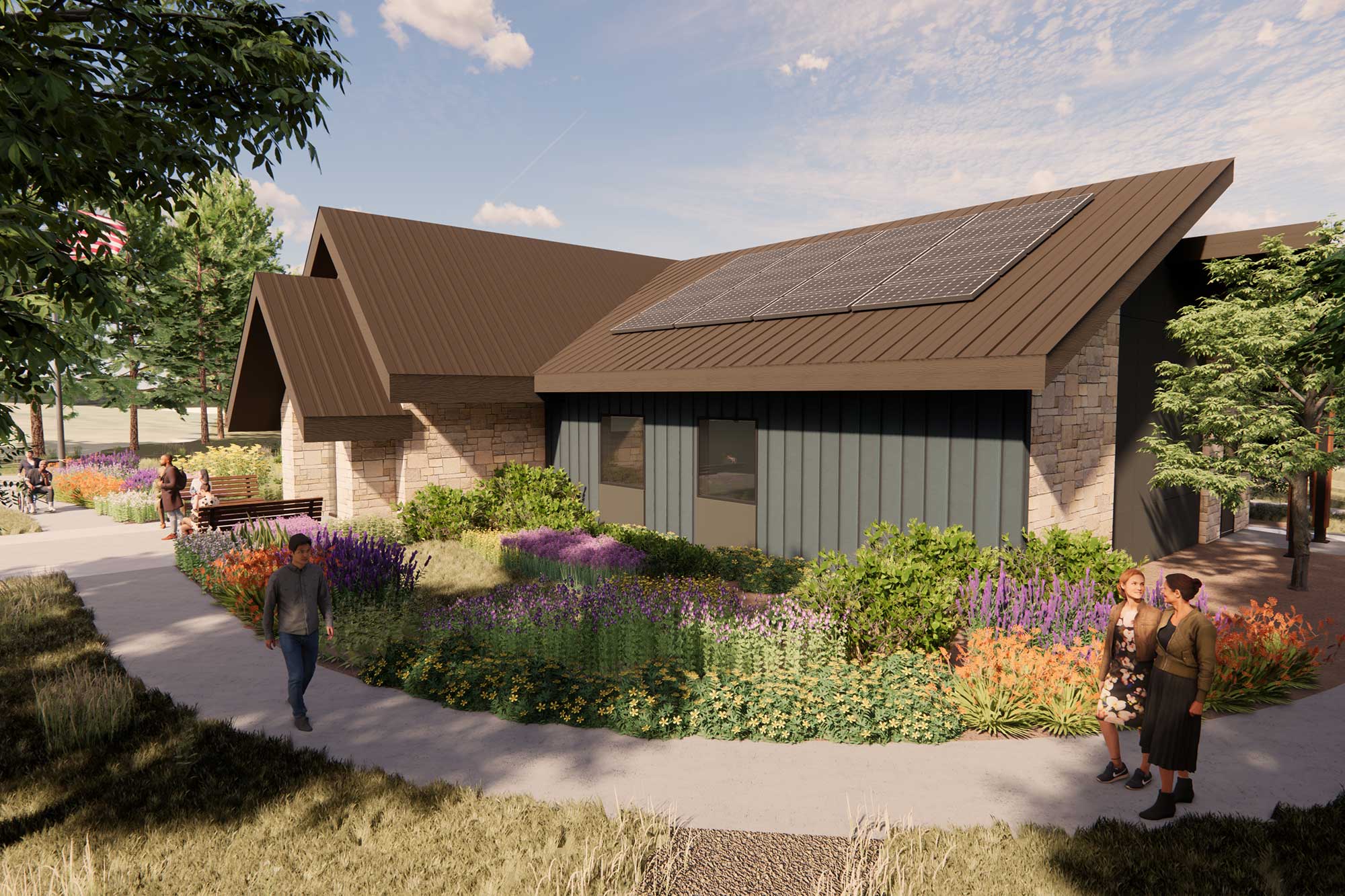
LOCATION
Harpers Ferry, IA
SERVICES
Architecture
Civil Engineering
Electrical Engineering
Interior Design
Landscape Architecture
Mechanical Engineering
Structural Engineering


